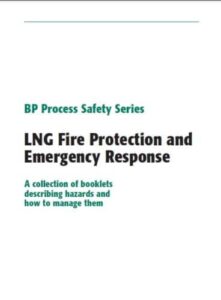LNG Fire Protection and Emergency Response
LNG Fire Protection and Emergency Response
LNG Fire Protection and Emergency Response is intended for fire and emergency res-ponders, design engineers, project engineers, facility operators, and safety professionals. The title aims to improve understanding of the nature and hazards of LNG and the special fire hazards management and emergency response measures required for such facilities. IChemE, the Institution of Chemical Engineers, is the center for chemical, biochemical and process engineering professionals worldwide.
The purpose of this booklet is to provide an overall understanding of Liquefied Natural Gas (LNG), the potential emergency situations that may arise at facilities and how to deal with these incidents as well as general LNG safety issues.
You can also Read Fire Engineering and Emergency Planning
LNG Fire Protection and Emergency Response
- Introduction to LNG
![LNG Fire Protection and Emergency Response]()
- LNG properties
- LNG hazards
- Tanks, containment and spill control
- Jetties and marine facilities
- Passive fire protection
- LNG, gas and fire detection
- Spill and fire control measures
- Emergency response plans
- Personal protective equipment (PPE)
- Codes and standards
- References
- Acronyms and abbreviations
- A. Gas detection test work analysis
- B. Foam system design considerations
- C. Historical foam application data
- D. LNG incidents
- E. LNG road tanker incidents
- F. LNG ship pre-arrival checks
- G. LNG ship/shore safety checklist
- H. Repeat checks during cargo operations
Natural gas liquefaction dates back to the 19th Century when British chemist and physicist Michael Faraday experimented with liquefying different types of gases, including natural gas. German engineer Karl Von Linde built the first practical compressor refrigeration machine in Munich in 1873. The first LNG plant was built in West Virginia in 1912 and it began operation in 1917.However, technical advances and other changes made after its publication, while generally not affecting principles, could affect some suggestions made herein. The reader is encouraged to examine such advances and changes when selecting and implementing practices and procedures at his/her facility.
Download
LNG Fire Protection and Emergency Response
2nd Link Here


Comments are closed.